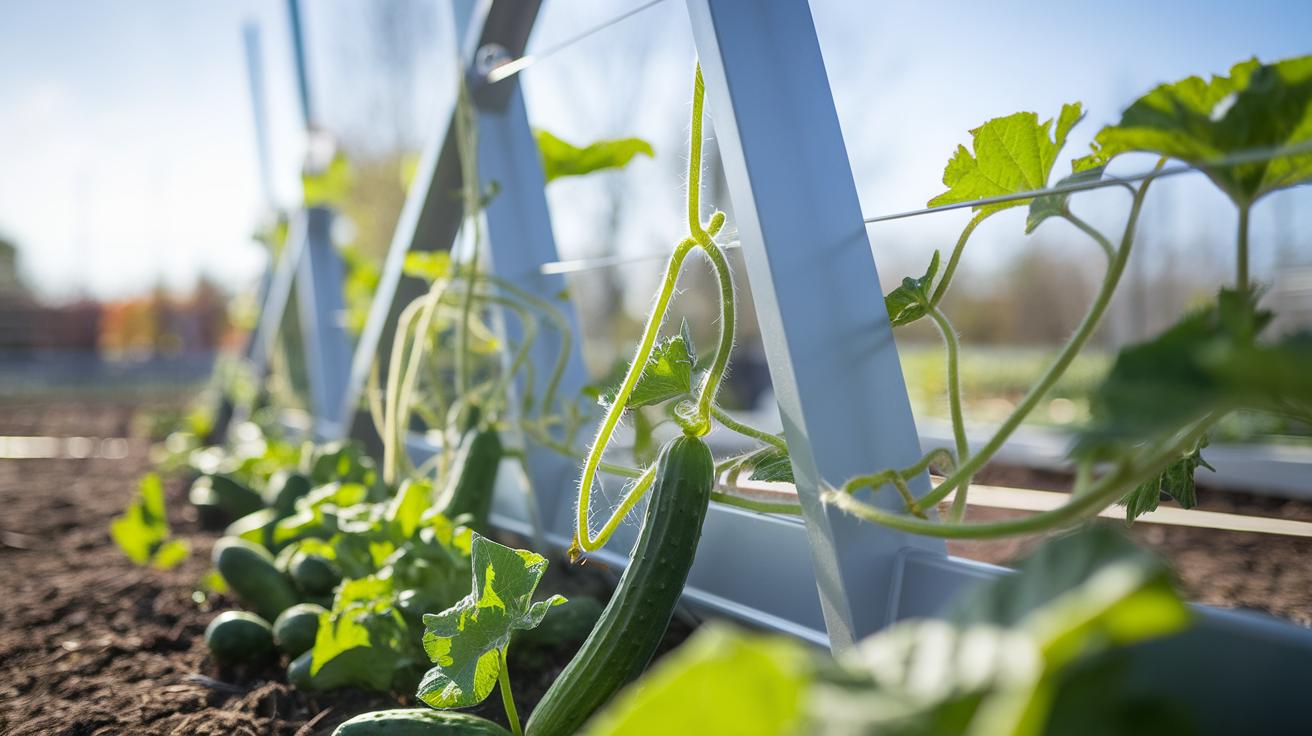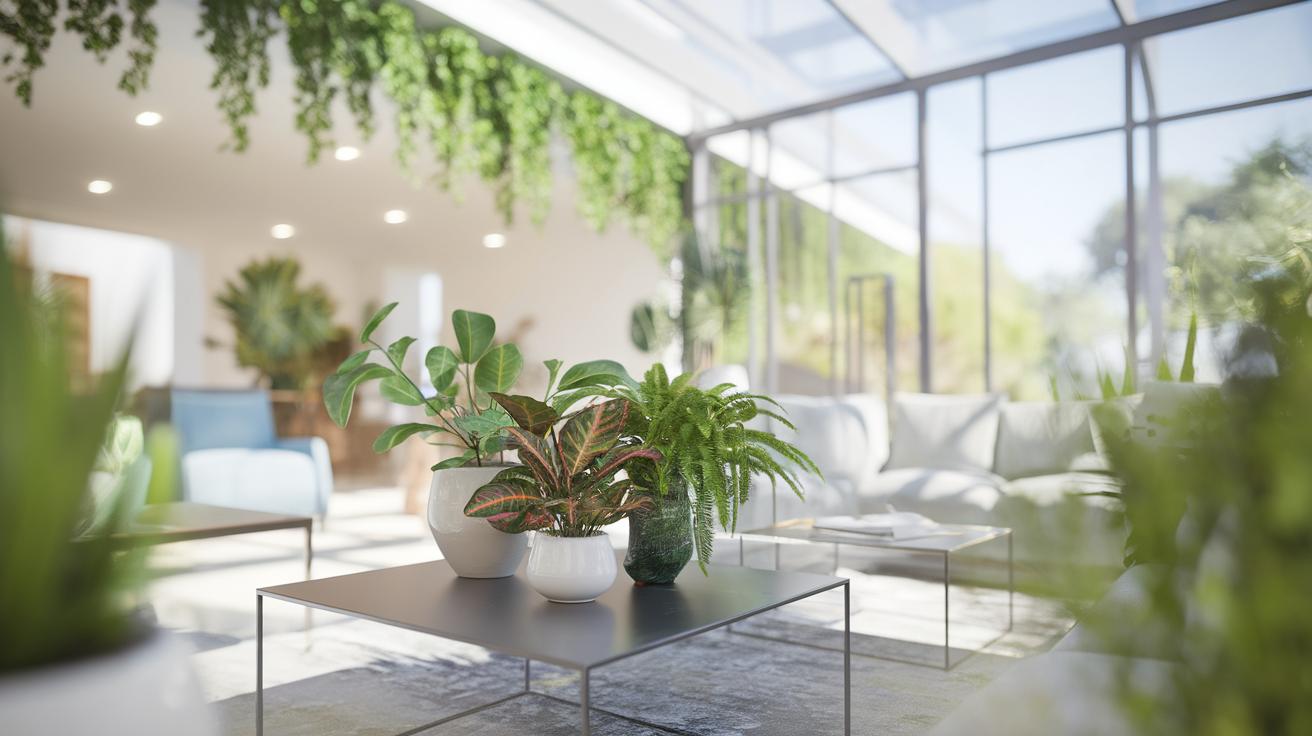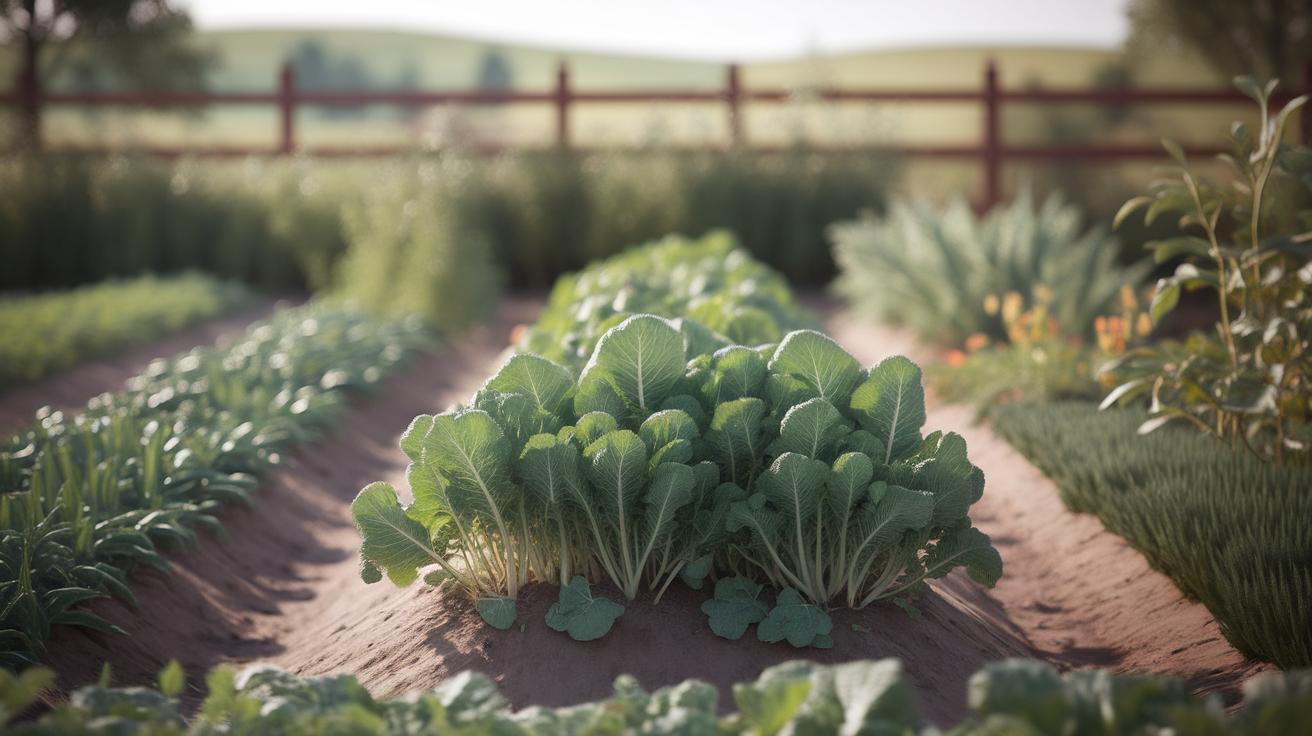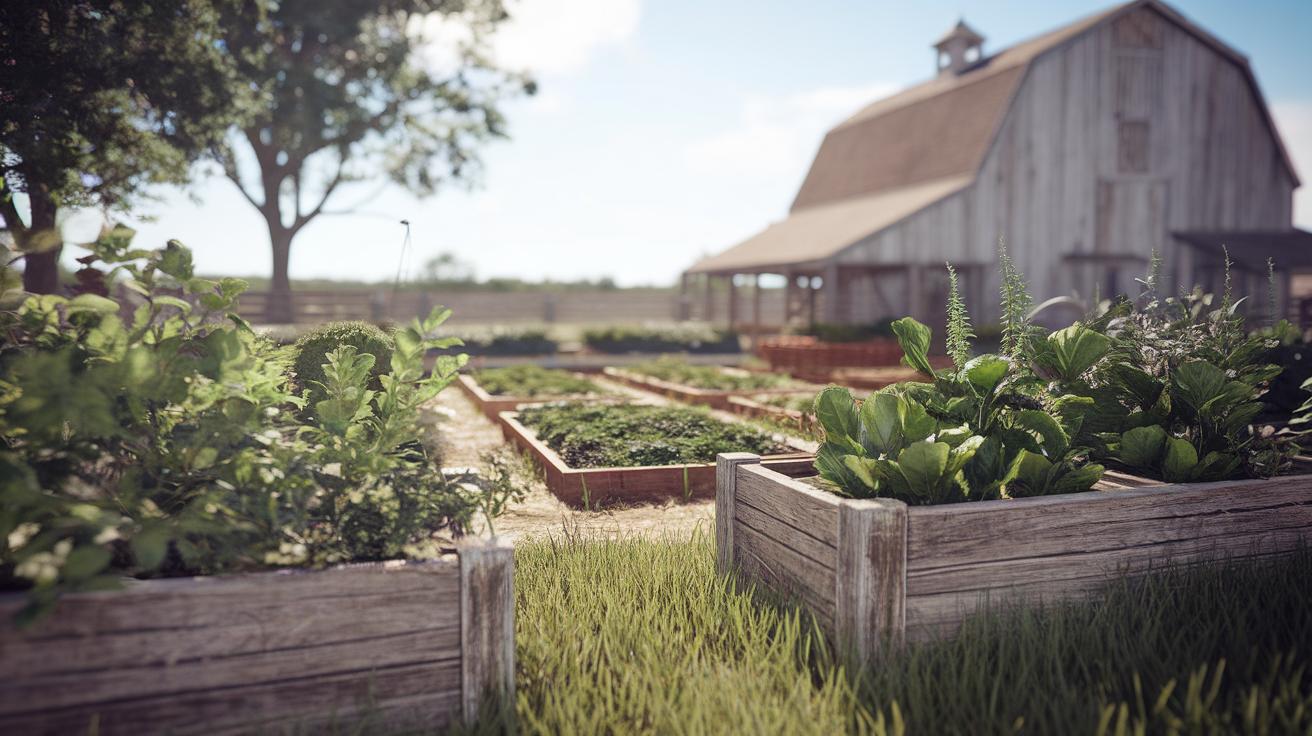Introduction
Growing cucumbers can be highly rewarding, especially when you utilize an effective trellis system. A cucumber trellis not only provides essential support for climbing vines but also enhances garden aesthetics and promotes healthy growth. The advantages of using a trellis can’t be overstated: they help to prevent diseases by allowing better air circulation, facilitate easier harvesting, and maximize space in smaller gardens. By adopting innovative techniques, gardeners can transform their cucumber plants into vertical displays that are visually appealing and productive.
This article will delve into various creative cucumber trellis ideas that cater to different gardening styles and preferences. From simple DIY options to more elaborate structures, each design offers unique benefits and functions. Whether you are an experienced gardener or a novice, these trellis ideas can inspire you to enhance your gardening experience and achieve bountiful cucumber harvests.
Understanding the Cucumber Plant Explore the characteristics of cucumber plants and their growth habits
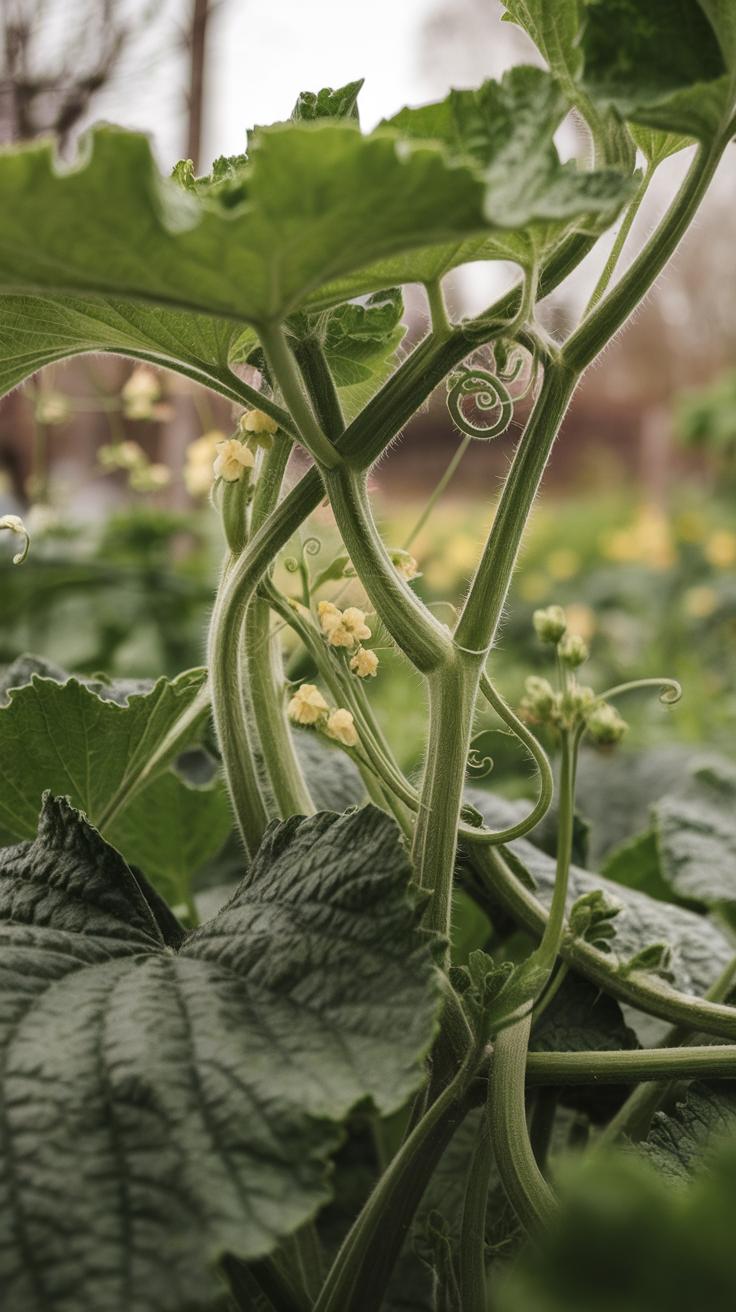
Cucumber plants, belonging to the gourd family, exhibit rapid growth, reaching heights of up to six feet or more. Their sprawling vines consist of tender tendrils that grasp onto structures for support. Given their nature, cucumbers flourish best in vertical spaces, which not only enhances air circulation but also minimizes the risk of diseases. The leaves provide shade to the fruit, which contributes to higher quality yields. When growing cucumbers, support structures play a pivotal role; they prevent the fruits from resting on moist soil, reducing the chances of rot and pest infestations. Employing trellises allows gardeners to maximize space, effectively utilizing vertical gardens, which is particularly beneficial for smaller plots.
Types of Trellises for Cucumbers
Several types of trellises can effectively support cucumber plants, each designed for specific garden layouts and aesthetic preferences. Traditional A-frame trellises, constructed with wooden poles and mesh, provide sturdy support while being easy to assemble. Vertical netting or string trellises offer a lightweight alternative, guiding vines upward without overwhelming the garden space. For gardeners seeking a whimsical approach, archway trellises can serve both functional and decorative purposes, creating a charming entryway in the garden. Vertical panels made from wire or lattice also offer sturdy options that allow for good airflow. Understanding the functionalities and optimal use cases for these structures can help in choosing the best trellis to enhance both plant growth and garden aesthetics.
Types of Trellises for Cucumbers
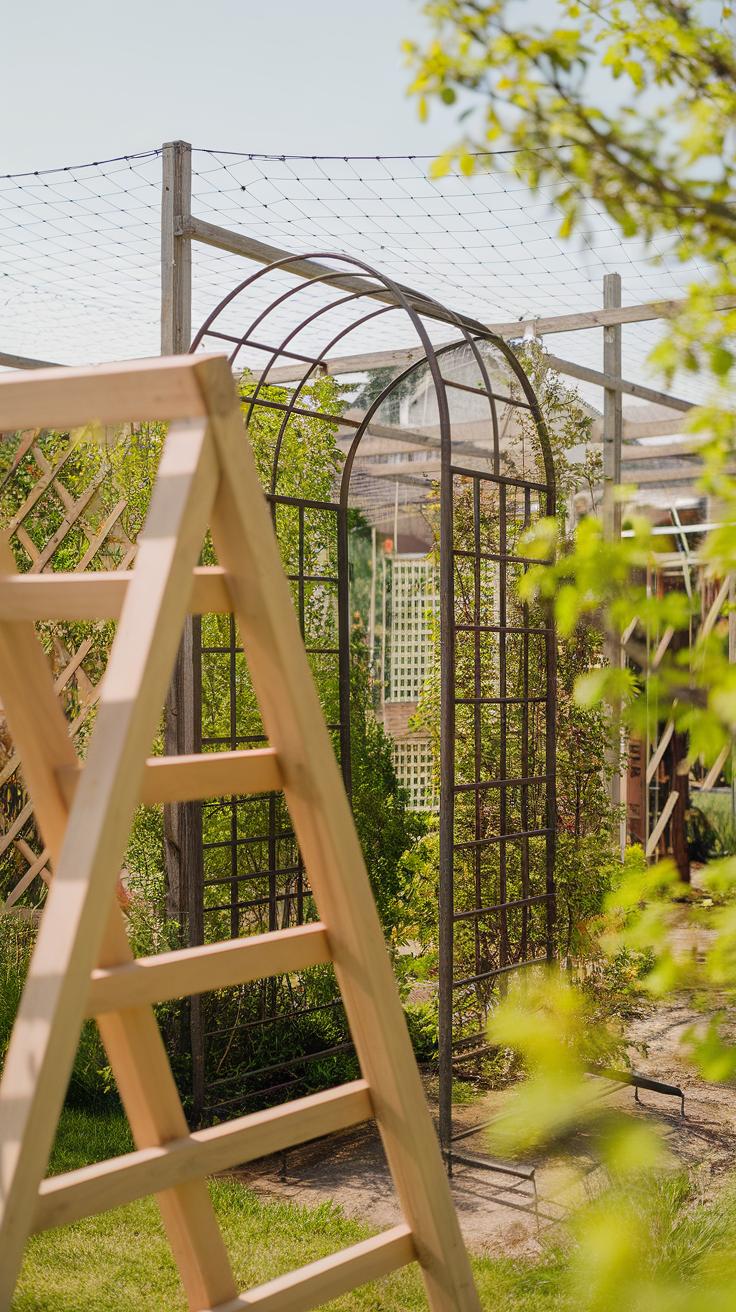
Functional Trellis Designs for Climbing Vines
There is a variety of trellis types that cater specifically to the climbing habits of cucumber plants, each offering unique functionalities suitable for different garden setups. A popular choice is the A-frame trellis, which provides ample support while maximizing vertical space. Its triangular shape allows for efficient sunlight capture, essential for cucumber growth.
The vertical grid trellis stands out for its minimalist design, consisting of vertical and horizontal strings or wires. This structure is especially effective for limited garden areas, offering easy access for harvesting. Another inventive option is the arch trellis, which can create a charming walkway in a garden while supporting vigorous vines. These designs integrate functionality and aesthetic appeal, making them ideal for both seasoned gardeners and novices looking to enhance their vegetable garden experience.
DIY Trellis Ideas for Climbing Vines
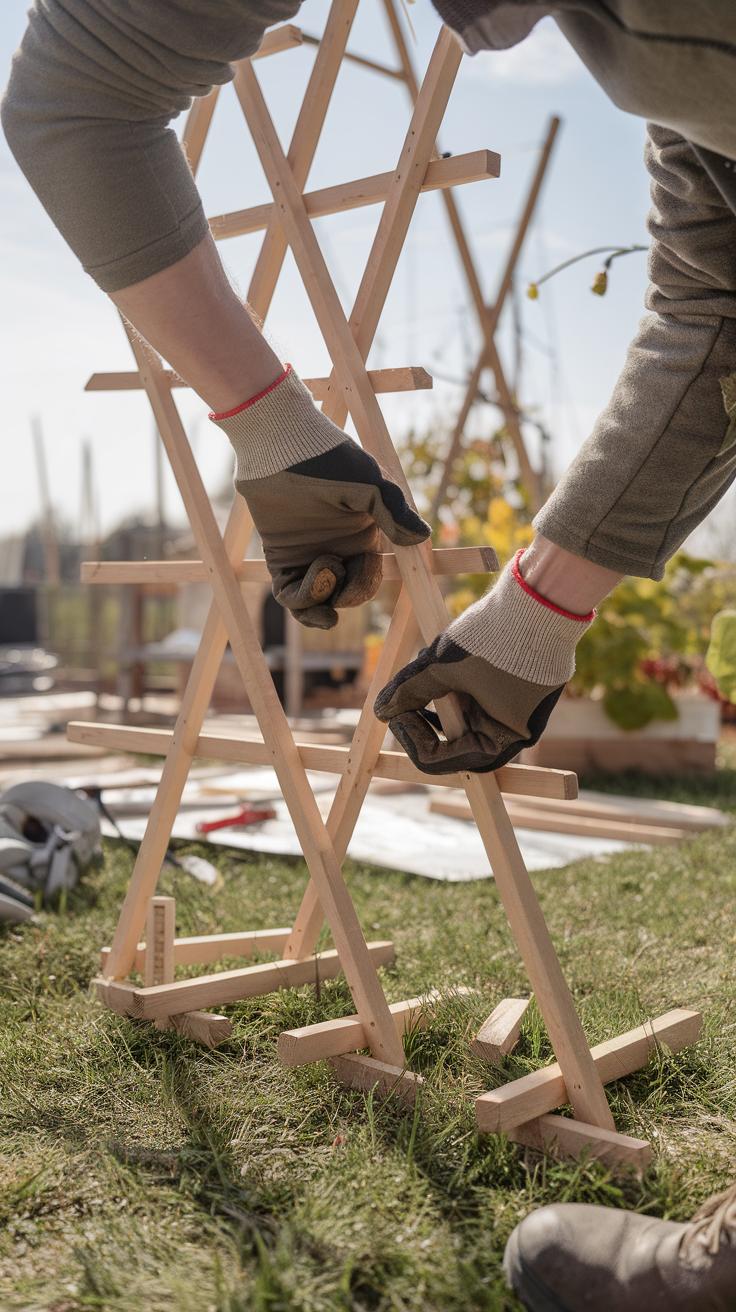
Simple Projects Using Common Materials
Creating a DIY cucumber trellis can be both fun and rewarding. One easy project involves utilizing wooden pallets, which can be repurposed into a sturdy structure. Start by cutting the pallet in half and standing each section vertically. Secure the two pieces together at the base for added stability, and plant cucumbers nearby to encourage upward growth.
Another accessible option is using bamboo stakes and garden twine. Simply stick the stakes into the ground in a triangular formation, then connect them at the top with twine, creating a pyramid shape. This design not only supports the vines but also adds a stylish element to your garden.
For those with fencing materials, a horizontal trellis can be crafted by attaching wire mesh to an old fence. This allows the cucumbers to climb and cascade beautifully, optimizing space in your garden. Each of these projects promotes healthy growth while adding aesthetic value to your garden.
Creative Trellis Designs Inspire Readers with Imaginative Trellis Designs that Add Character to Any Garden
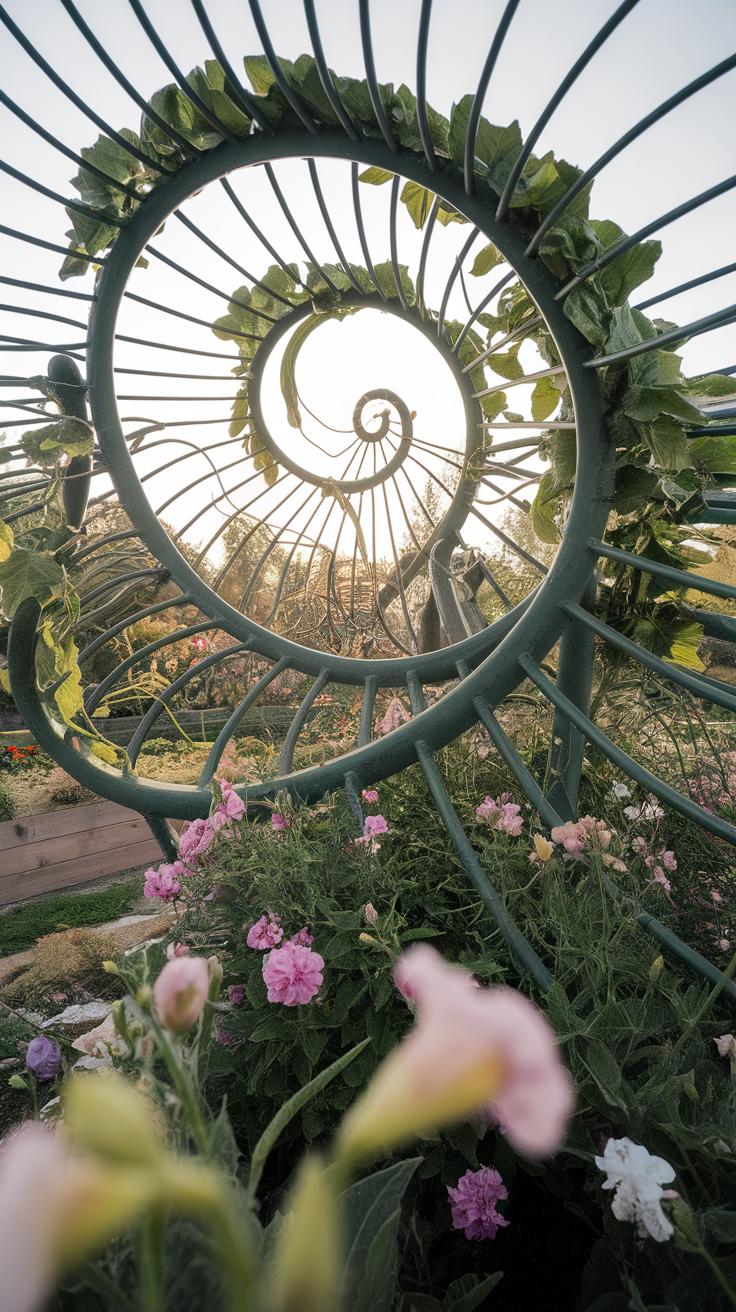
Cucumber trellises can extend beyond functionality to become striking focal points in your garden. Integrating creative designs not only supports climbing vines but also enhances the overall aesthetic. For example, a pergola-style trellis adorned with twinkling lights creates an enchanting evening atmosphere, while also providing essential support. A mosaic-tiled trellis can introduce color and artistry, blending nature with craftsmanship.
Consider repurposing old wooden doors or lattice panels; these can evoke rustic charm while elevating your garden’s design. Incorporating arched or spiral trellises adds dynamic verticality, creating an artistic motion as the vines ascend. Finally, using bold colors or unconventional shapes can ignite conversations and transform your cucumber patch into a vibrant gathering point, inspiring neighbors and passersby alike.
Material Considerations for Innovative Cucumber Trellis Construction
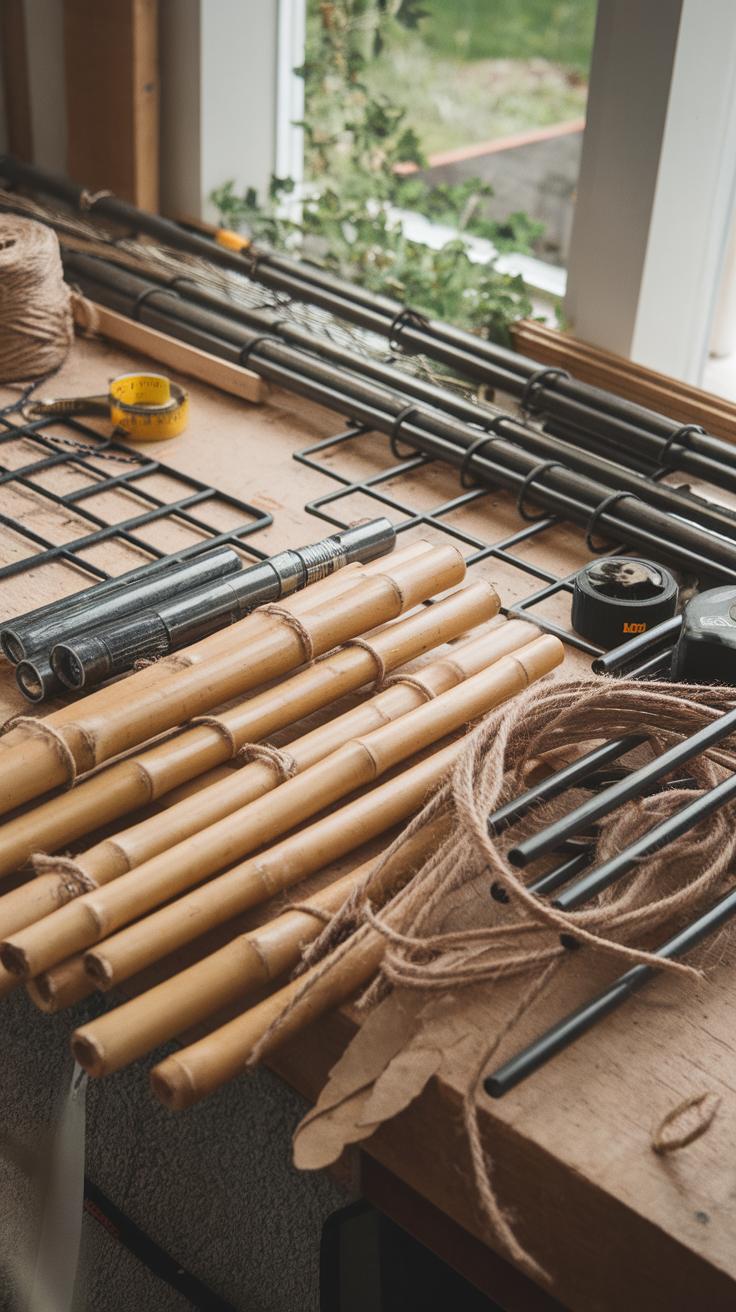
Choosing the Right Materials for Your Garden Trellis
When constructing cucumber trellises, selecting the right materials significantly influences both functionality and aesthetic appeal. Wood is a popular choice due to its natural look and adaptability; however, untreated wood can deteriorate over time when exposed to moisture. Metal trellises, such as those made from galvanized steel, provide outstanding durability and strength, making them ideal for supporting heavy cucumber vines. On the downside, metal can get hot in direct sunlight, potentially impacting plant health.
Another option is PVC, which is lightweight, easy to assemble, and resistant to rot, but may lack the rustic charm of wood or metal. For a more eco-friendly choice, bamboo poles serve as an excellent lightweight material that integrates well with garden themes but may be less durable than other options. Understanding these material properties helps in creating structures that not only support cucumber growth but also enhance the overall garden design.
Trellising Techniques for Success Effective Management of Cucumber Vines
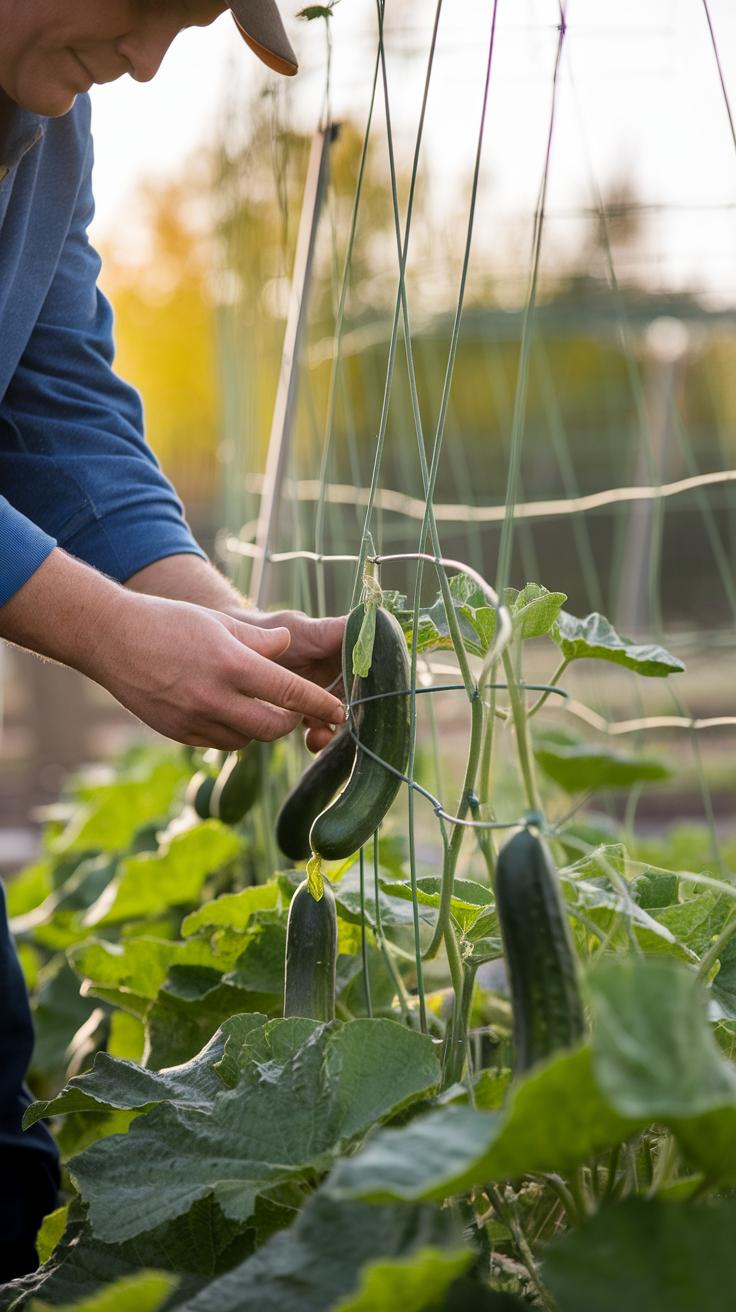
Training Your Cucumber Vines Effectively
To achieve a bountiful cucumber harvest, mastering the art of training vines on trellises is vital. Initiating the process involves gently guiding young plant shoots towards the trellis as they grow. Utilizing soft materials such as garden twine or cloth strips can prevent damage to tender stems. Regularly check the growth direction of the vines; they tend to spiral clockwise, allowing for a more natural climb. Encourage upward growth by pinching back excessive trailing shoots, focusing energy on the healthier vines. Employing a vertical orientation not only saves space but also improves air circulation, reducing chances of disease.
Seasonal Adjustments for Better Support
As the growing season progresses, adjustments may be necessary to ensure robust vine development. Initially, secure lightweight support structures for young seedlings. Once the plants mature, heavier-duty trellises can be employed to accommodate the weight of burgeoning cucumbers. Regularly rotating the vine attachment points can stimulate growth, preventing any one area from enduring undue stress. Utilizing extension clips or hooks can facilitate this method, allowing for easy repositioning. Observing plant behavior and adapting accordingly ensures that vines remain healthy and productive throughout the season.
Maintaining Your Trellis Essential Practices for Cucumber Vines
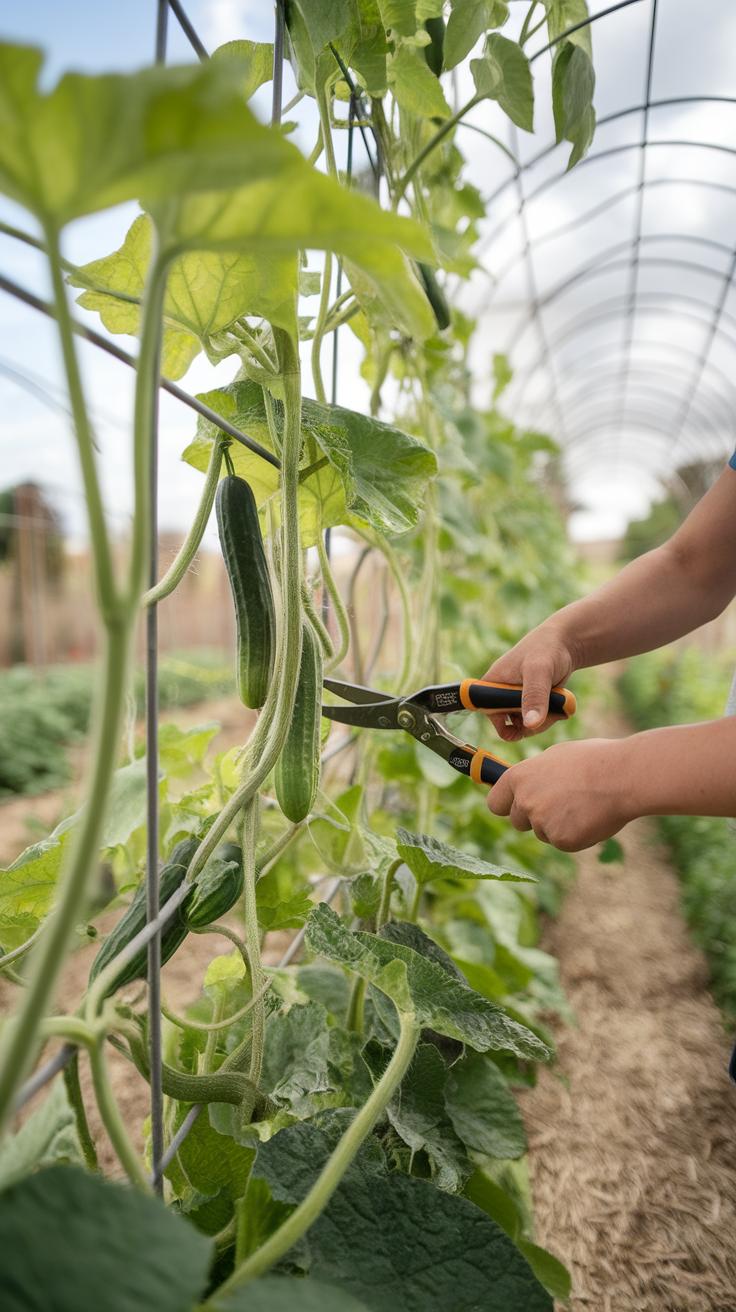
Regular Inspections
Keeping your cucumber trellis in prime condition requires regular inspections. Check for any signs of wear or damage to the trellis structure, including breaks or rust on metal frames and mildew on wooden beams. Early detection of issues allows for timely repairs, preventing further complications that could affect vine growth. Ensuring that the trellis is stable and secure will support vigorous climbing and improve yield efficiency.
Cleaning and Sanitizing
Periodically clean the trellis components to remove dirt, debris, or plant material that may harbor pests or diseases. Use a soft brush to clear away buildup, and if appropriate, disinfect wooden parts to minimize fungal threats. A clean trellis not only contributes to a healthier garden but also enhances the aesthetic appeal of your outdoor space, creating a thriving environment for your cucumber plants.
Common Mistakes to Avoid in Cucumber Trellising
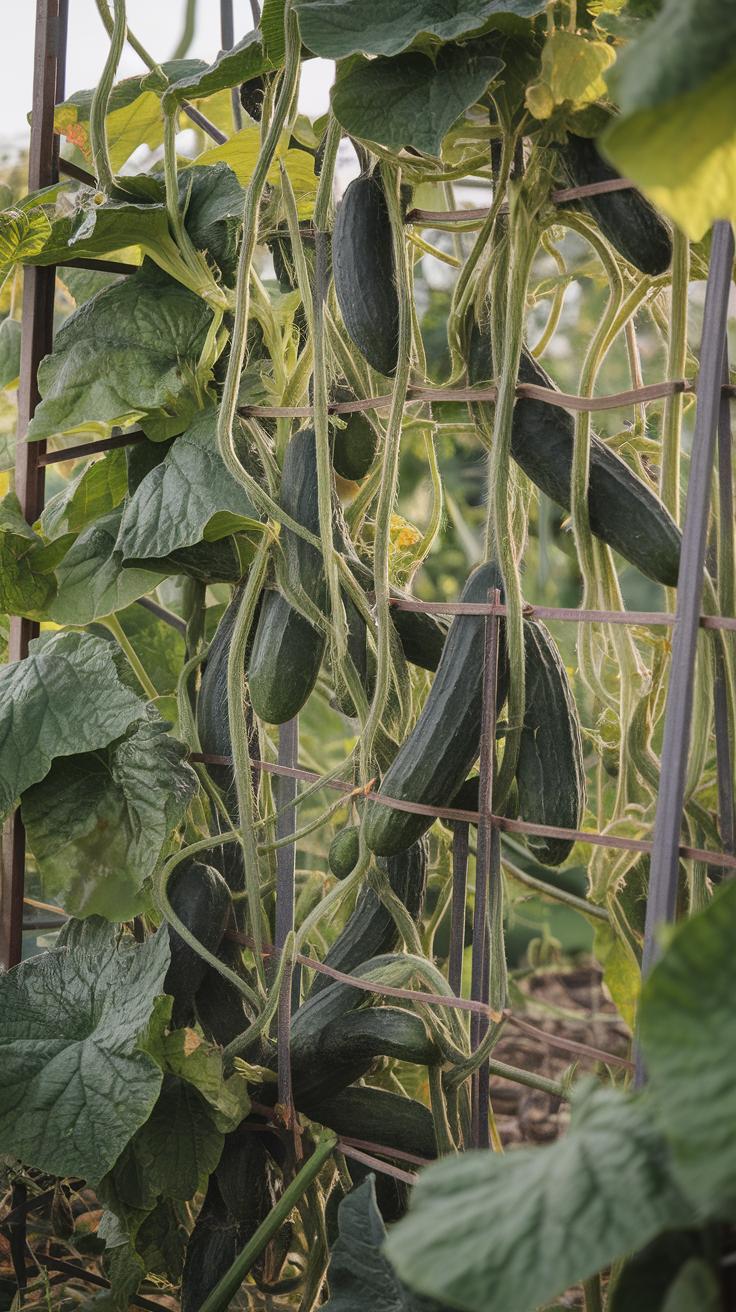
Errors in Using Trellises for Climbing Vines
One common error gardeners make when utilizing trellises for cucumbers is selecting insufficiently sturdy materials. Fragile structures may collapse under the weight of abundant fruit and foliage. To avoid this mistake, choose robust materials like wood or metal supports that can withstand the vigorous growth of cucumber vines.
An equally prevalent issue arises from inadequate spacing between plants and trellises. Cramming cucumbers too close together restricts airflow and can foster diseases. Ensuring ample space, at least 12–18 inches apart, will enhance ventilation and reduce disease risk.
Neglecting to train cucumber vines onto the trellis often leads to tangled plants that are difficult to manage. Gently guiding the vines regularly encourages climbing behavior, aiding the overall health and yield of your cucumber crop.
Benefits of Trellising Beyond Cucumbers
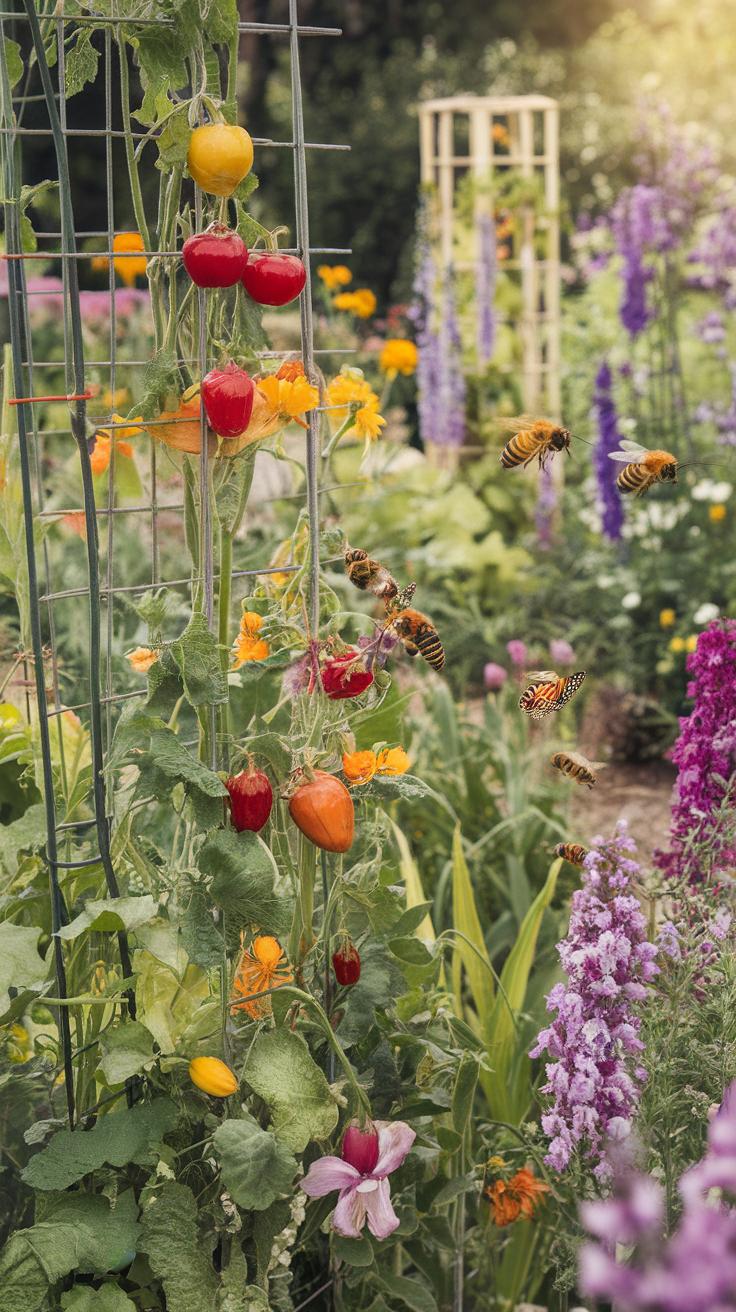
Expanding Your Climbing Garden
Trellising isn’t solely beneficial for cucumbers; it enhances the growth and productivity of various climbing plants. Utilizing these structures allows plants like peas, beans, and tomatoes to access sunlight efficiently, promoting healthier growth and reducing pest issues. Climbing varieties, such as pole beans, thrive when supported by a trellis because their natural tendency is to grow upward. This leads to greater yields and simplifies the harvesting process.
Versatile Garden Structures
The ingenuity of trellis design can accommodate a multitude of plants, extending into ornamental climbing vines like morning glories and clematis. Gardeners can get creative, utilizing simple materials such as bamboo poles, wire, or even repurposed furniture for unique trellising solutions. By incorporating various climbing plants into the garden, trellises not only add aesthetic appeal but also create microclimates that benefit the overall biodiversity of the garden ecosystem.
Conclusions
Incorporating an innovative cucumber trellis into your gardening strategy can lead to significant benefits for both plant health and garden management. By utilizing vertical space effectively, these trellises support your cucumber plants, giving them the structure they need to thrive. Furthermore, the aesthetic appeal of various trellis designs enhances your outdoor space while promoting easier access for maintenance and harvesting.
Your choice of a cucumber trellis not only reflects your gardening style but also contributes to the overall success of your cucumber cultivation. As you explore different trellis ideas, remember to consider the specific needs of your plants and the available space in your garden. A well-chosen trellis can make all the difference, turning your cucumber-growing endeavor into a fruitful and enjoyable experience.


